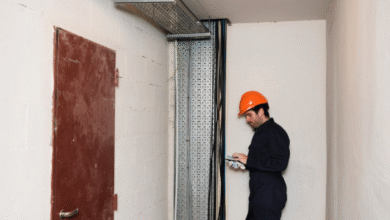How to Plan a Website Redesign Without Losing SEO Rankings?
Strategic Steps to Redesign Your Website While Preserving SEO Rankings and Traffic

If you want your website to always perform well on search engines, you have to focus on website redesign from time to time. This will help your website to stay relevant. Also, it will improve your user experience and branding goals.
However, website redesign might also bring some risks to your website. For instance, if your website already ranks high, you might end up losing your SEO rankings. Hence, it is important to plan this process carefully.
Therefore, read on to get a better idea of how to redesign your website without losing your SEO performance. This is applicable even if you are working with an eCommerce web development agency.
Why Website Redesign Impacts SEO Performance?
The following are some of the major reasons why website redesign impacts SEO performance:
a) If the URL of your website changes without a proper redirect, the search engine will treat it as a new website. Hence, it will impact your SEO performance.
b) After the website redesign, some content might get modified or deleted. This might also include those pages that were ranking on search engines.
c) In some cases, website redesign leads to broken links, slow loading speed, missing metadata, and other problems. These factors lead to a drop in SEO performance.
d) If you fail to make your website redesign mobile-friendly, it will impact your SEO performance. This is because mobile optimization is a top SEO priority.
Hence, it is important to plan a proper UI/UX redesign process. This will help you to preserve your SEO foundation.
Meanwhile, if you are working with an eCommerce website, it is better to work with a development agency. This is because these agencies come with expert developers and designers. Apart from that, they have SEO experts who have a better idea of product pages, categories, and internal links.
Essentially, eCommerce websites have thousands of webpages. Hence, even some small errors might result in a big impact. In addition to that, focus on the content and schema markup while you are redesigning the website.
How to Perform Safe Website Redesign? – Essential Steps
The following are the website redesign steps you must follow if you do not want to lose your SEO rankings:
1. Audit Your Current Website
The first thing to do is analyze your existing website. In this case, work with Google Analytics and Google Search Console. This way, you will be able to identify the following:
● Best-performing pages.
● Keywords that are bringing in traffic.
● Backlinks to particular URLs.
● Mobile-friendliness and loading speed of webpages.
Hence, with this audit, you will set the foundation. This will help you decide what content and structure you must preserve.
2. Make Sure to Define Your Goals Clearly
Before you start a website redesign, you must have a good idea of why you are doing it. In this case, ask the following questions:
● Do you want better aesthetics?
● Does the website require improved navigation?
● Do you want to completely rebrand your website?
In fact, by answering those questions, you will be able to align your SEO goals with your broader objectives. Let’s say you want to upgrade your brand identity. Then, you must revise your content. Despite that, you must maintain those elements that ensure SEO performance.
3. Collaborate with Your SEO Experts
While you start the Website Development Process, make sure to involve your SEO professionals early. This is because they will be able to guide you with the following aspects:
a) Your website’s architecture.
b) Keyword placement.
c) Meta tags and schema markup.
d) Redirect strategies.
Therefore, by collaborating with your SEO professionals, you will make SEO the core part of your website redesign.
4. Preserve or Redirect Your URL Structure
If you really want to change your URL, ensure that you implement 301 redirects. The redirects work from your old pages to new ones. This way, you are informing the search engine algorithm that you are permanently moving your website content. As a result, it will help you retain your link equity.
5. Ensure Your Content Maintains Its High Value
While you are working on the UI/UX redesign process, make sure not to remove/alter content pieces that are already ranking. Rather, try to improve those content pieces with better visuals, formatting, and informational updates.
6. Optimize Your Website for Mobile and Loading Speed
In general, search engines prioritize websites that load quickly and are mobile-friendly. Hence, you must do the following to optimize your website for SEO performance:
a) Make sure to implement responsive design on your website. This will help your website adapt to mobile devices.
b) Include high-quality but compressed images on your website. This will not slow down your website.
If you want to get a better idea of your loading speed, check your website performance through PageSpeed Insights. This will give you data on testing and performance tips.
7. Make Sure to Update Your Metadata and Tags
In general, all websites have those unique aspects:
● Title tags.
● Alt text (for images).
● Meta descriptions.
● Header tags (H1, H2, and H3).
Make sure to review them while you are working on the website redesign. This is because these elements are extremely important for SEO performance. In addition to that, you must also utilize various SEO audit tools. These will help you scan the site. Thereby, you will be able to fix issues (if any).
8. Continuously Monitor Performance After Launch
If you make your website live again with new changes, make sure to closely monitor its performance. In this case, track the following aspects closely:
a) Changes in organic traffic.
b) Bounce rates.
c) Keyword rankings.
d) Conversion rates.
Meanwhile, if you observe a drop in performance, immediately investigate the matter. Then, take the necessary steps to address those causes. In fact, even small tweaks might restore your website’s SEO performance.
Start Redesigning now
Sometimes, a website redesign is necessary. However, that does not mean you have to sacrifice your SEO performance. All you have to do is plan, test, and collaborate properly. This way, you will be able to relaunch a fresh website.
Meanwhile, your website will also retain its search visibility. More importantly, it will continue to attract traffic.




